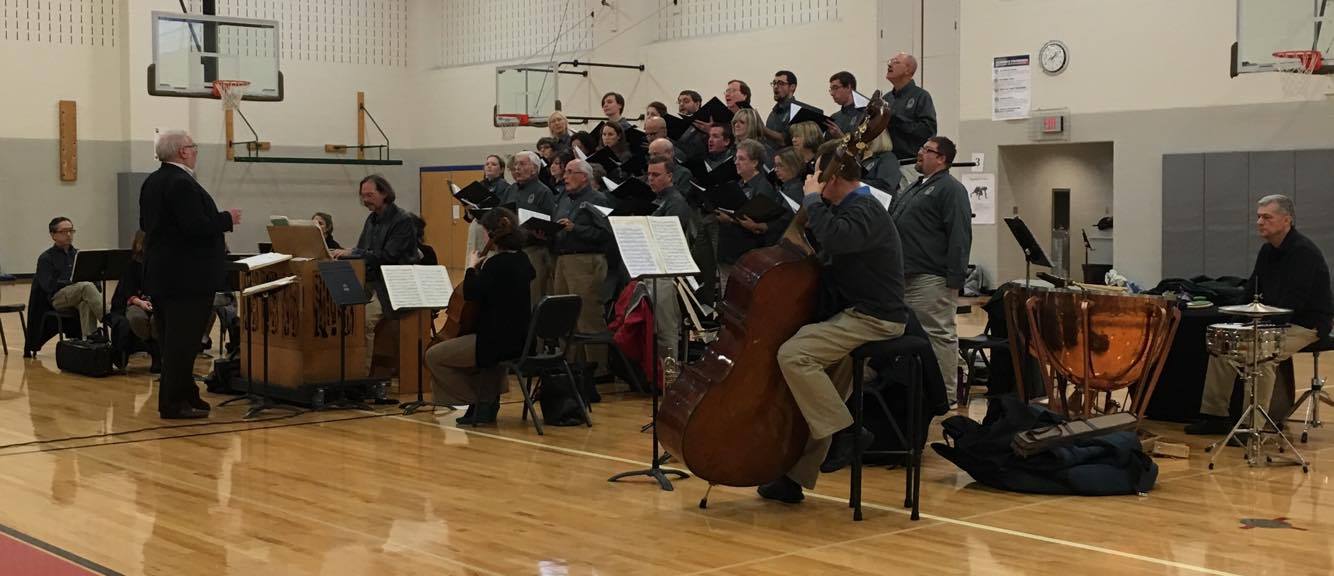
Around thirty members of The Choir took to the road on Wednesday and Thursday to sing for students in Bethlehem, Easton, and Saucon Valley. I had planned to go for both days, but spent Wednesday recovering from a stomach bug (best laid plains). Nevertheless, Thursday was a lot of fun and brought great rewards as we sang for several hundred third graders at the Broughal Middle School in Bethlehem, and around seven hundred and fifty students at the Saucon Valley Middle School. Thanks to choir member Joe Fink, who shared this photo, taken by his son’s teacher, with me (his son’s infectious joy at seeing his dad sing with The Choir, and with the music, in general, was a highlight of the day).

The morning begins with an extensive warm-up, to try to clear the cobwebs, and begin to develop some mental focus. To that end, Choir members give one another a quick back-rub, followed by some shiatsu chops, and we conclude with the much-appreciated order to “scratch.” Then we sing about 4 minutes of vocalization exercises, honing and purifying our vowels, finding some rhythmic unanimity, and extending the early-morning range.
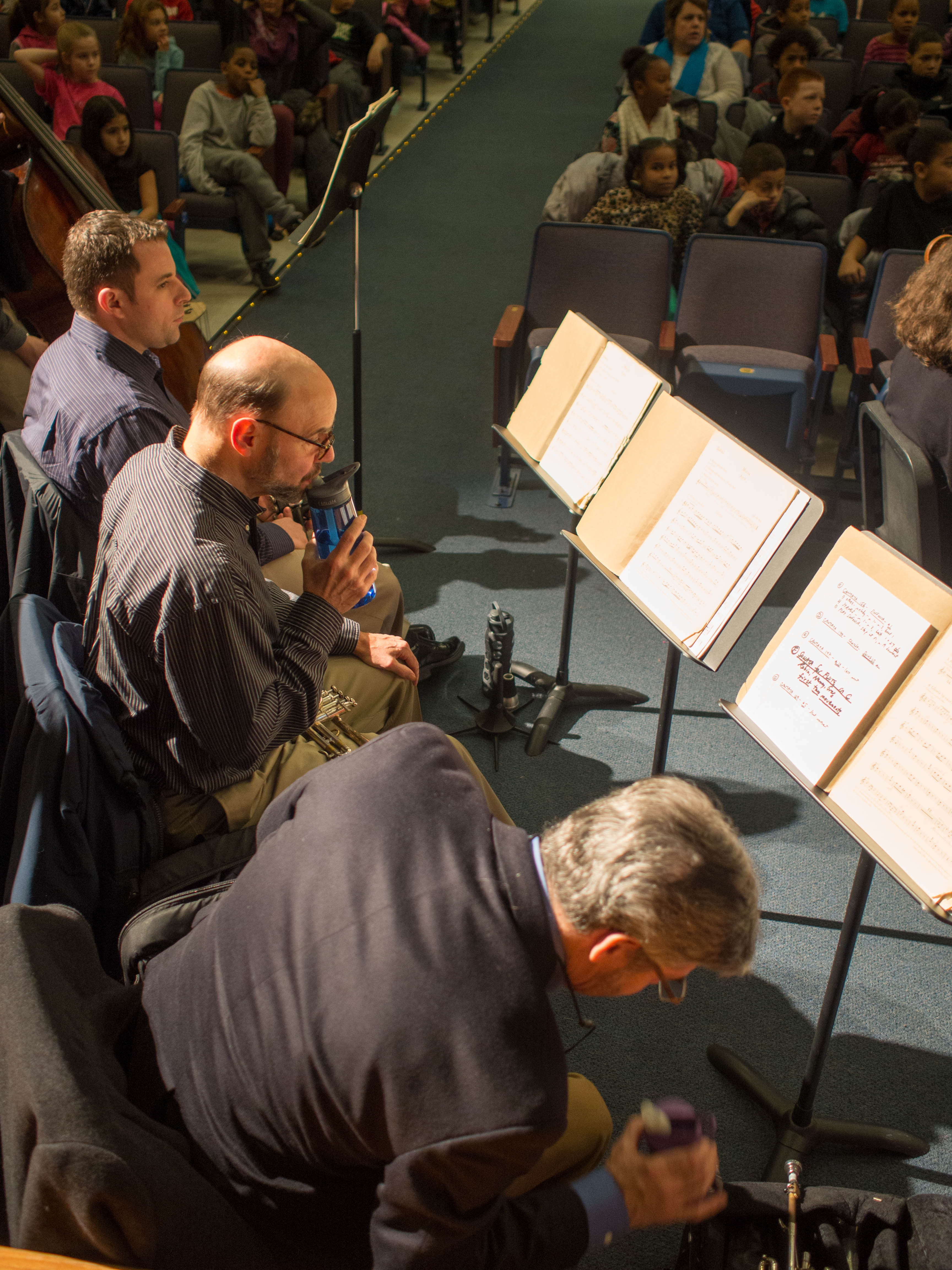
Meanwhile, the trumpets resort to coffee to gird themselves for some playing in the stratosphere. As the students arrive, Greg Funfgeld greets them and works the room, peppering them with questions about Bach, giving them a gentlemanly handshake, and generally creating a sense of excitement about what the next hour will bring.
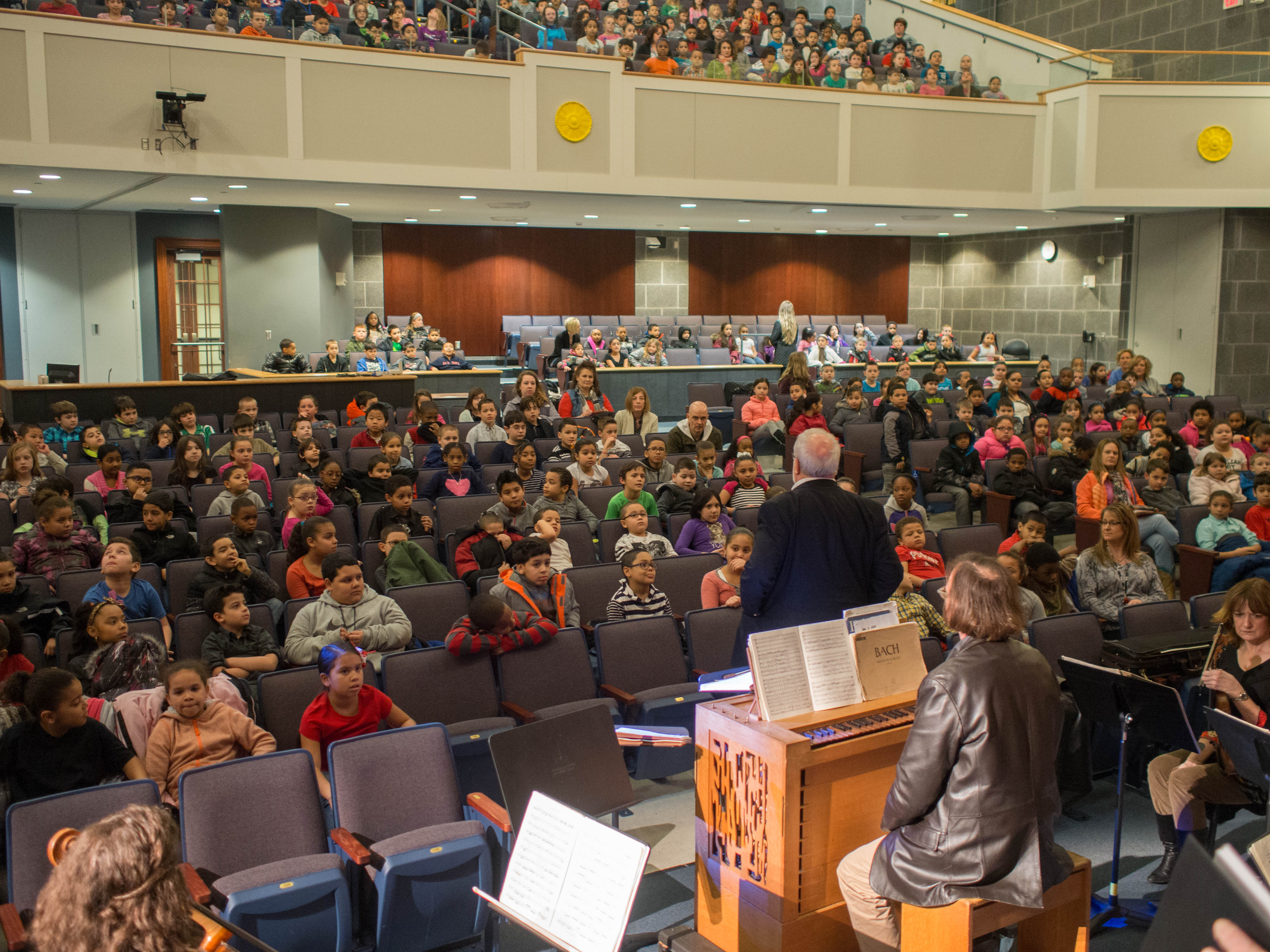
Then, we’re soon off with the program itself. We begin with the last section of the motet Singet dem Herrn, which bubbles over with passages of long, melismatic dance, concluding with a high b-flat for the sopranos. It’s a gripping way to begin, and Greg introduces the concept of text-painting for the students (Bach makes a florid display on the word alles, or all, with many notes given to the word). Next, he deconstructs the Gloria from the Mass in B-Minor for them, showing how the various components are assembled, from the trumpet fanfares, to the dialogue between the strings and winds, to the choral entrances which mimic the trumpet fanfares. Then, he pauses to give a brief introduction to the compositional technique of fugue as we all sing Row, Row, Row Your Boat, together. After taking apart and reassembling the fugue in the Et in terra pax section of the mass, we demonstrate the whole thing in the longest bit of listening for the students. They usually guess correctly that the climactic entrance of the theme will be given to the trumpets, and then the trumpets demonstrate that brilliantly.
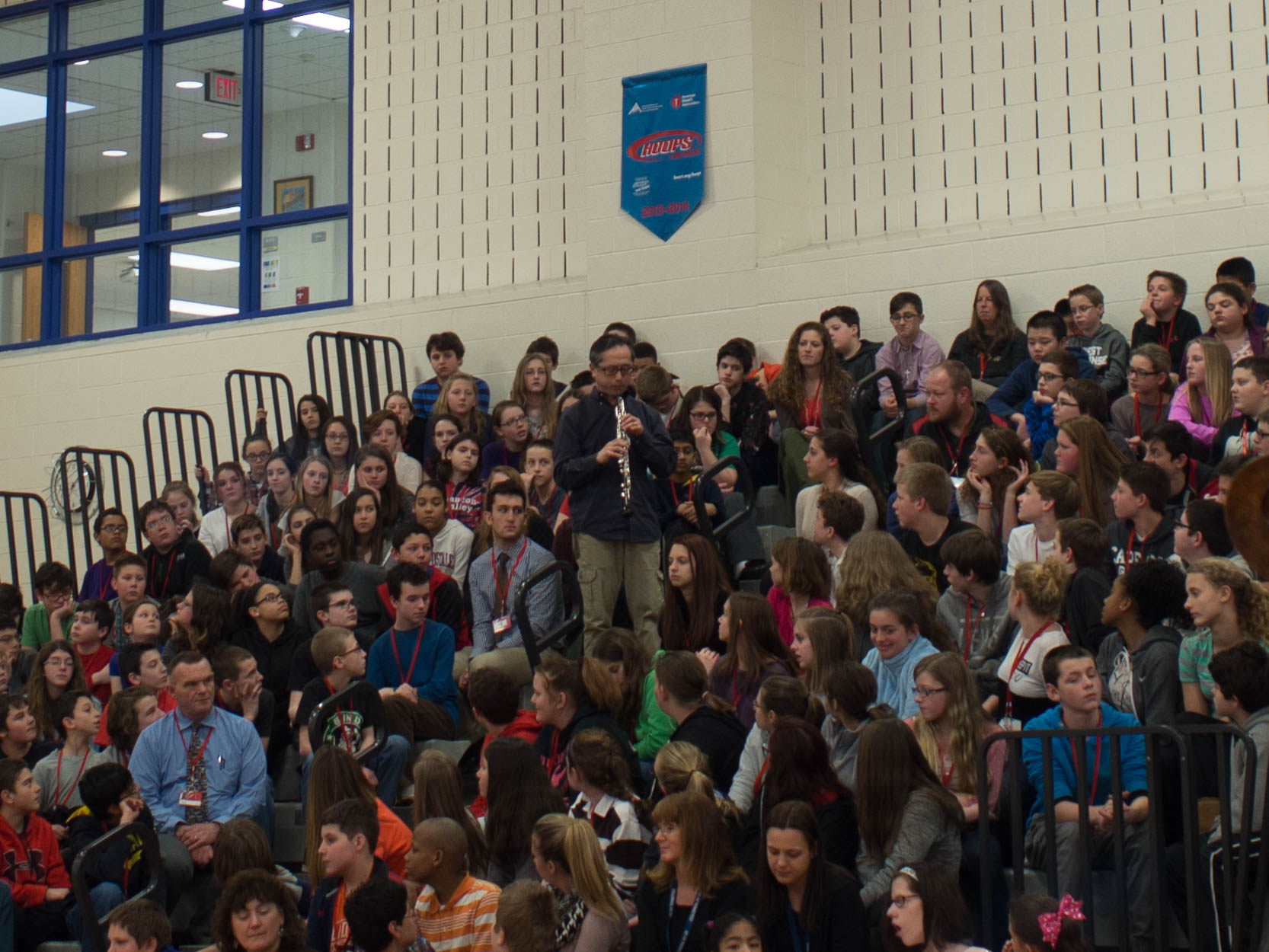
Where in the Audience is Nobuo?
Greg then gives a little bit of biographical context to the rich emotions found in Bach’s music (the causes for joy, the tragedy that seemed to be a daily part of his existence), and encourages the students to listen quietly to the sinfonia from one of Bach’s most lyrical cantatas. Nobuo Kitagawa, our oboist for these outings, then plays for the students, who give him their rapt attention. He usually finds a way to take himself out into the audience, and it’s always amusing to try to find him before he plays. After the quiet listening, Greg talks about how Bach’s music is eminently adaptable, and we sing Ward Swingle’s jazz arrangement of Sleepers, Wake!, complete with tasty brush work from our timpanist, Steve Mathiesen. We also sing the Jesu, Joy of Man’s Desiring, chorus from Cantata No. 147. There’s some more quiet listening as Robin Kani, Greg, and our cellist play a movement of a flute sonata, complete with flute pyrotechnics from Robin. Then follows a period of question and answer, and we conclude the program with the final chorus of Cantata No. 129, with zesty fanfares from trumpets and strings.
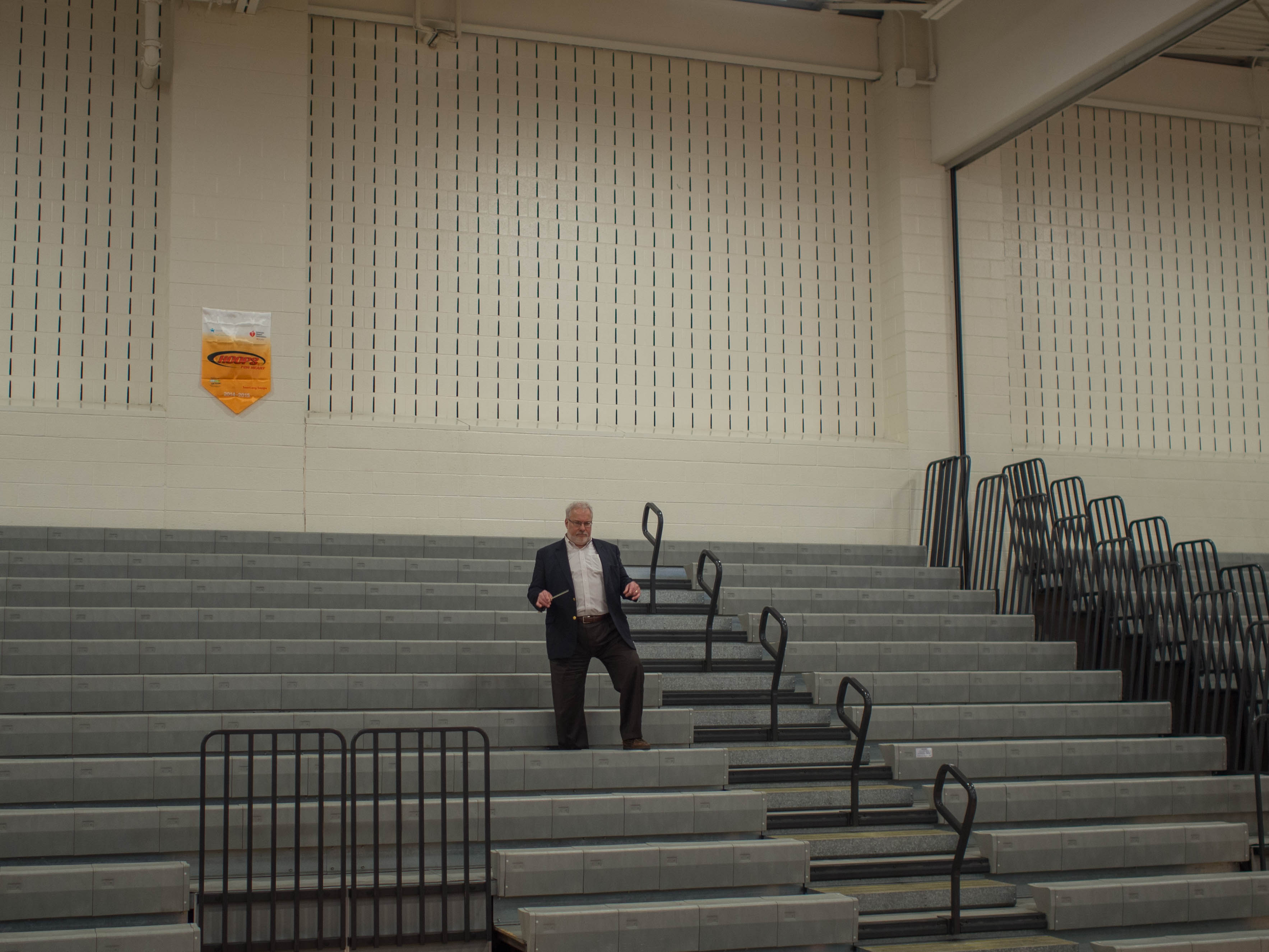
Carnegie Hall, Kennedy Center, Royal Albert Hall, Saucon Middle School?
What I love about Bach to School is the devotion and commitment to communicating all we love about Bach’s music to the next generation. Sure, some students’ lives won’t be changed, some were distracted, some will surely feel (encouraged mightily by our culture) that classical music has already had its day, BUT there are always discernible sparks for some of the students: you see the the look of wonder on their faces when they hear Nobuo play so beautifully, they demonstrate great excitement when they hear the voices spinning in counterpoint, they sometimes look a little overwhelmed as the trumpets climb to the highest heights. We do this for everyone, but we hope that some will be captivated, as we all were, by the sound of a live choral/orchestral performance. Those students will eventually be our choral scholars, they might attend college to study music, or they’ll happily appear in our audience with the excitement that we recognize from our own experiences. I’m full of admiration for how Greg brings every ounce of his passion to these experiences. His enthusiasm and joy are no different among the students than they were when we’ve performed in some of the great concert halls of the world. Bach to School is a gift (supported by incredible generosity from so many of our benevolent supporters) that we are ecstatic to give.










































